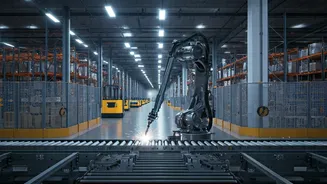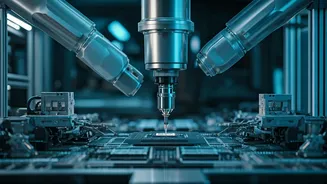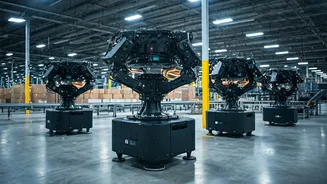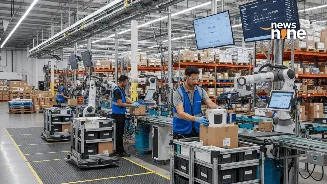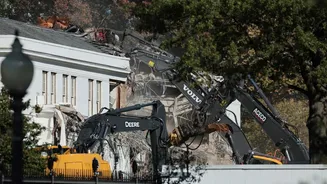Automated Future Unveiled
Amazon is actively pursuing a radical transformation of its operational model. The e-commerce giant intends to automate a large segment of its workforce,
a move that could lead to considerable job displacement. Reports indicate that Amazon is aiming to replace more than half a million positions with advanced robotics and artificial intelligence. This strategic shift underscores Amazon's dedication to boosting efficiency and streamlining its logistics and fulfillment processes. The scale of this automation initiative is unprecedented, and the consequences will likely ripple across multiple sectors of the economy, raising questions about the future of human labor in the face of increasingly sophisticated technological capabilities. Amazon’s actions represent an important moment in the ongoing evolution of automation in the workplace.
Robotic Workforce Expansion
The advancements in robotics and AI are the foundation of Amazon's ambitious strategy. These technologies permit the company to automate tasks that were once performed exclusively by humans. The company has already deployed an extensive array of robots in its warehouses and distribution centers. These automated systems are capable of handling a broad range of tasks, from picking and packing products to moving inventory across vast facilities. The expansion of this robotic workforce is not merely an incremental increase; it is a fundamental shift in how Amazon operates. This evolution is driven by the desire to reduce operational costs, increase speed, and increase the precision of its logistics networks. The success of Amazon's automation efforts could serve as a blueprint for other companies seeking to streamline their operations.
Employment Landscape Shift
The introduction of widespread automation is likely to cause major shifts in the employment landscape, with potential consequences for both Amazon's existing workforce and broader labor markets. The plan to replace over 500,000 jobs with robots means a significant number of employees could face the prospect of unemployment or displacement. As Amazon automates more and more functions, the demand for human workers may decrease, leading to fewer job opportunities in roles such as warehouse operations, logistics, and delivery services. However, it's also important to consider the creation of new positions related to the design, maintenance, and oversight of these automated systems. These new opportunities are likely to require advanced skill sets, possibly demanding that workers undergo retraining programs to adapt to the changing needs of the market. The net effect on employment rates and labor markets will depend on a variety of factors, including the rate of technological adoption, the growth of new industries, and the ability of workers to develop necessary skills.
Economic Implications Explored
Amazon's automation strategy will have significant effects on the economy, touching on aspects like productivity, competition, and wages. The increased efficiency that comes with automation could result in lower operational costs, which might translate to decreased prices for consumers. Moreover, it is possible that improved productivity could boost overall economic output and potentially drive economic growth. However, there are also possible negative implications, especially concerning wage stagnation or decline in specific sectors. When automation reduces the demand for human labor, wages for affected jobs might decline, especially in situations where workers lack the skills to move to more advanced roles. The growth of automation could also shift the balance of power between labor and capital, potentially increasing income inequality if the benefits of higher productivity are primarily captured by business owners and investors. The effects on the economy will depend on a combination of factors, including the pace of automation adoption, economic policies, and the availability of re-skilling programs.
Future Outlook Considered
Amazon's plan to replace a significant portion of its workforce with robots signals a shift in the future of work and offers insight into the ongoing transformations in technology and economics. The success of this automation strategy could influence other companies to adopt similar strategies, which would possibly accelerate the transition to a more automated economy. Over time, there is a likely increase in demand for skilled workers who are able to design, develop, and maintain these advanced systems, while the demand for unskilled labor may decrease. Policy makers and educators will need to consider these trends and adapt their strategies to address the consequences. This includes creating programs that promote lifelong learning and provide workers with the skills they need to navigate the automated world. The decisions made by Amazon and other companies will shape the future, leaving significant impacts on employment, economic growth, and the structure of industries in the years to come.
